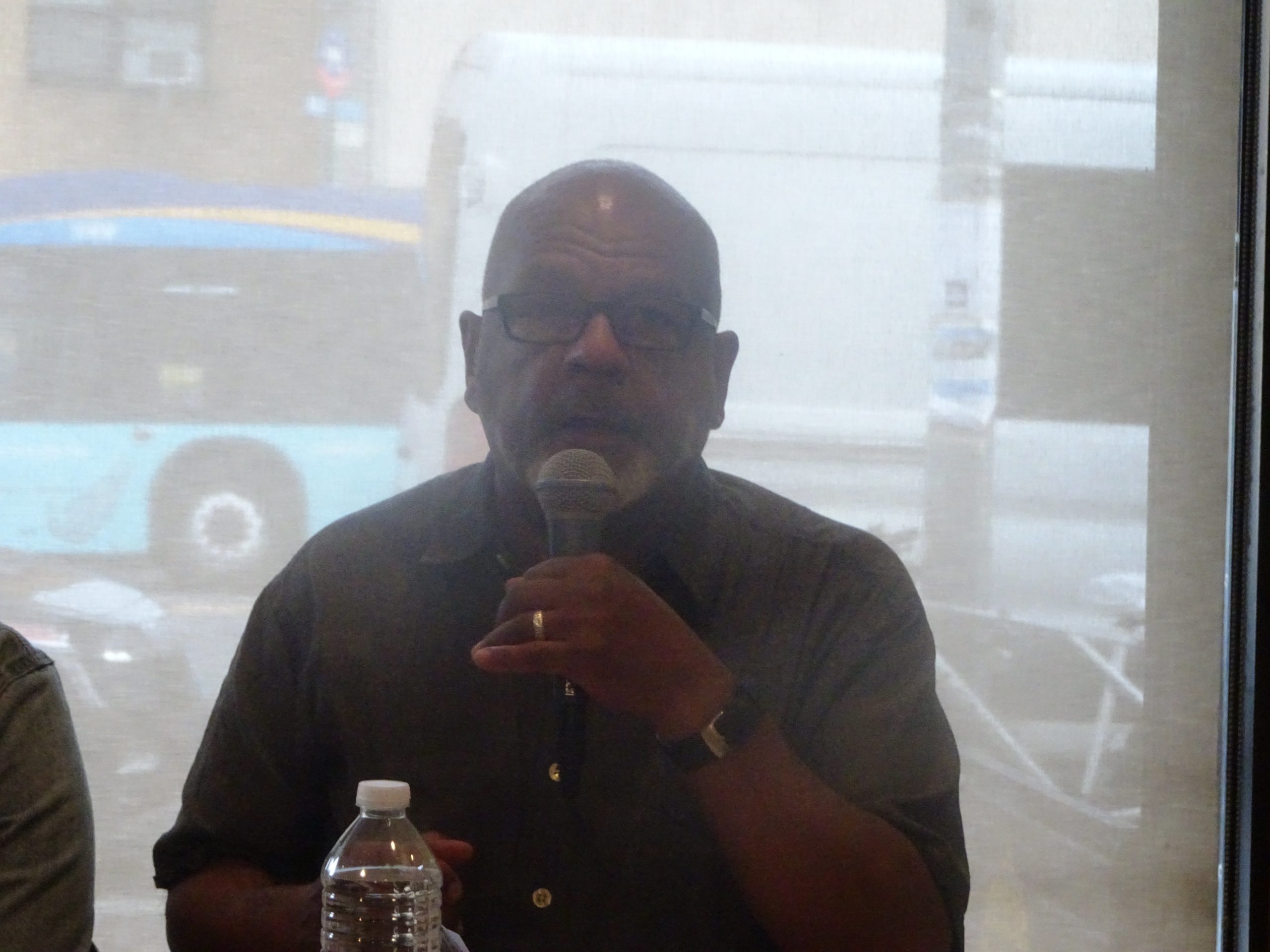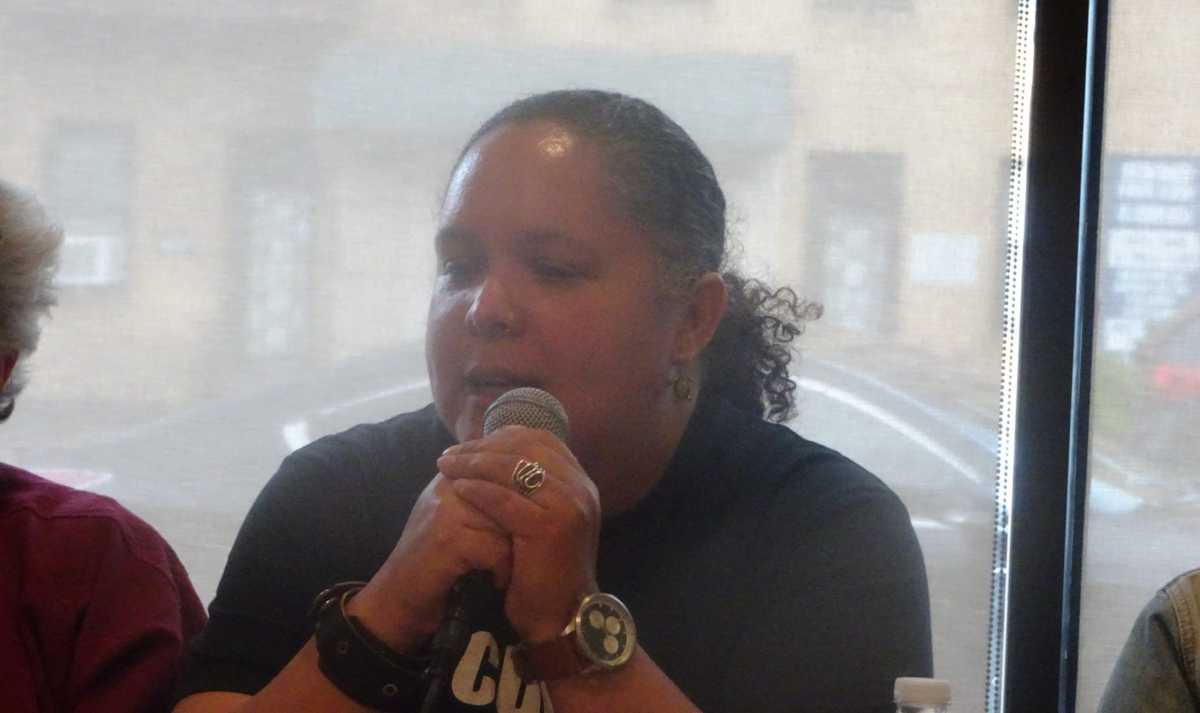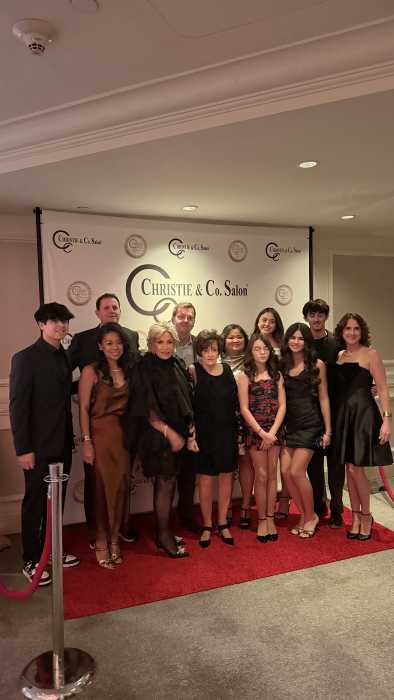When Yoseli Castillo Fuertes first arrived in Upper Manhattan in 1988 as a new immigrant and college student from the Dominican Republic she immediately saw a need to create an LGBTQ space in the neighborhood.
“Back in 1990, going downtown and coming up here, I was like two different people,” said Fuertes. “There were not a lot of [LGBTQ] spaces up here [in Upper Manhattan], or they were hidden. We had parties at peoples’ houses, and things like that, but I wanted to be able to go into a space openly with my girlfriend and just be accepted. And this is happening now, so we’ve come a long way.”
Her story was just one of the compelling tales told at the Northern Manhattan Arts Alliance’s public forum on Upper Manhattan’s LGBTQ history last Monday.
The event took place at the Buunni Coffee House, 4961 Broadway. Community organizer Richard Allman moderated the forum. The featured panelists included activist poet Yoseli Castillo Fuertes, community historian Miriam Frank, author/historian Eric K. Washington, and Memphis Washington (no relation to Eric), founder of the Queer & Trans (Q&T) Meetup at the Word Up Community Bookshop.
Manhattan Borough President Gale Brewer (D) promoted the event, but could not show up due to a prior engagement at The Lesbian, Gay, Bisexual and Transgender Community Center’s Pride Week Garden Party, according to her spokesperson Courtney McGee.
“In talking about Upper Manhattan’s LGBT history, and in particular LGBT cultural history, please understand; tonight’s a first,” said Allman. “It’s an exploratory evening, beginning to define what we can do together.”
Memphis Washington’s story began late in the neighborhood’s evolution, when the LGBTQ community in Upper Manhattan was far more visible. She talked about her discovery of the Word Up Bookshop in Washington Heights, a space that fostered the kind of progressive thinking that motivated her to found the Q&T Meetup – a support/discussion group for LGBTQ youth in the neighborhood.
“Through high school and college, I was a community organizer,” said Memphis Washington. “Coming out of that, I migrated uptown to 162nd Street and started working at Word Up, which is a community bookshop that’s sort of a conglomerate space. We think intentionally about how we are bringing in people, and how we’re keeping people, how we’re taking care of people.”
Eric Washington discussed the history of the community from a more scholarly angle. In the process of doing research for his book about “redcaps” – a nickname for railroad baggage carriers, who were predominantly African-American in the early days of Grand Central – he discovered a plethora of influential black LGBTQ figures from Upper Manhattan’s history. One name he mentioned was Georgette Harvey, who starred as Maria in the first Broadway production of “Porgy” (and later reprised her role in George Gershwin’s “Porgy and Bess”).

“These were not the people who became famous names, like the Harlem Renaissance figures… but they were important, and the knew anybody who was anybody on the scene,” said Eric Washington. “It was so refreshing to just open my eyes and see all of these names that I wasn’t familiar with. Harlem is certainly a very significant part of Upper Manhattan, but Upper Manhattan extends so far beyond that.”
Frank talked about a different sort of intersectionality – specifically, her experience as a queer Jew. In 1982 she moved into a studio apartment, right across the street from the local Orthodox synagogue. Her neighbor, referred to as Mrs. Pfeiffer, spoke fondly of the two ladies who had occupied that same apartment for twenty years before Frank moved in.
“These women could not have just been friends – not living in such close quarters for so many years,” said Frank. “What’s important is how very ordinary our queerness has been within the wider community of refugee German Jews. We live our lives neither as a queer statement nor in any kind of closet.”
Near the conclusion, Eric Washington summed up the evening, saying that the “curation” of their experiences was an essential aspect of community building among the LGBTQ.
“It’s interesting and heartening, this process of curating our experiences and digesting them for ourselves, and being able to offer them back to each other – to our friends, to the public,” said Eric Washington. “We need to be aware of our roles as curators, of collecting experiences and being able to share them; we’re sort of like walking anthologies.”






